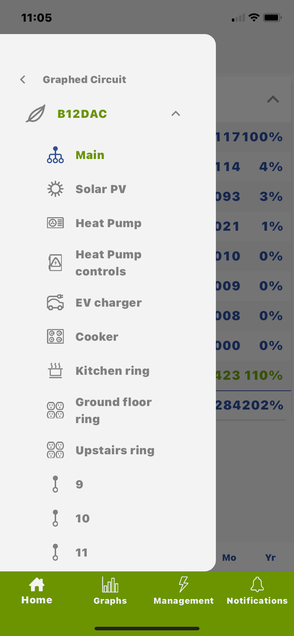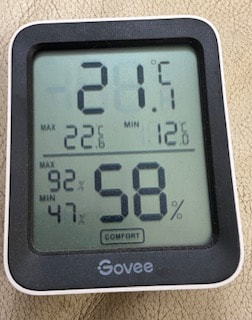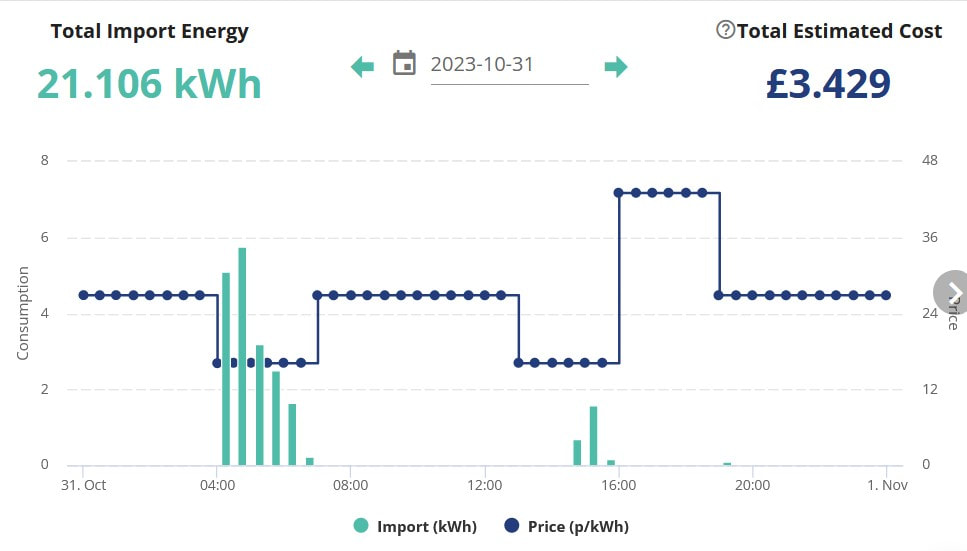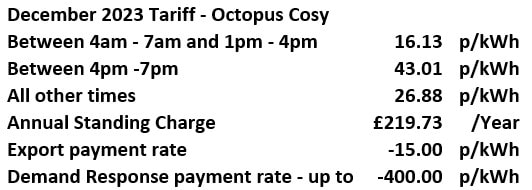An energy conscious household
We are now much more conscious about how much electricity we use. The electricity meter and heat meter measure the electricity in and total heat out of the heat pump. In 2022, it consumed 2,020kWh electricity and produced 7,162kWh of heat. In July, the solar thermal system produced 94% of all the hot water used, and 35% in December, meaning 67% of our annual hot water is produced by the solar panel.
A £180 Emporia metering system was installed on the electricity consumer unit, allowing an App to measure instantaneous power in every circuit in the home, The smart meter shows what the house is using, but this system shows what appliance or circuit is using the power. This enables reduction in energy use by turning off things not being used
We are now much more conscious about how much electricity we use. The electricity meter and heat meter measure the electricity in and total heat out of the heat pump. In 2022, it consumed 2,020kWh electricity and produced 7,162kWh of heat. In July, the solar thermal system produced 94% of all the hot water used, and 35% in December, meaning 67% of our annual hot water is produced by the solar panel.
A £180 Emporia metering system was installed on the electricity consumer unit, allowing an App to measure instantaneous power in every circuit in the home, The smart meter shows what the house is using, but this system shows what appliance or circuit is using the power. This enables reduction in energy use by turning off things not being used
Having a smart meter enables us to take advantage of different tariffs. The graph below details the time of day rates for Octopus Cosy showing two cheap rate periods and an expensive rate between 4pm and 7pm. The graph shows a day when the battery charges in the cheap rate periods and the house uses no grid electricity outside the cheap rate. Overall in a month the electricity in the house is costing approximately 20p/kWh. The graph shows the only grid electricity use on this day is to charge the battery in the cheap rate periods.
A summary of the Dec 2023 tariff
The "demand response" is when the grid is short of electrcity - typically a winter evening 5:30 - 7pm when the demand on the grid is expected to be high. Instead of starting a coal fired generator (typically), the national grid pays suppliers to reduce their demand. They do this by asking households to reduce their consumption for a specific 1 hr to 1.5 hr period and they pass on some of the payments the grid gives them. Consumers who have a smart meter can opt in and participate by turning off electricity using equipment during this period, or discharging their battery back to the grid during this time window. As I write this - yesterday we were credited £12 against our next bill for turning the house temperature down and discharging the battery for 1.5 hours.




 RSS Feed
RSS Feed